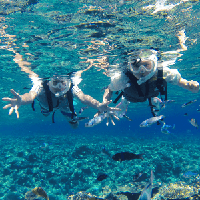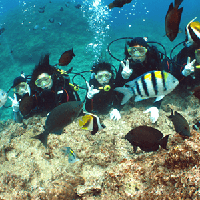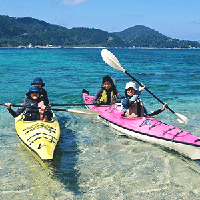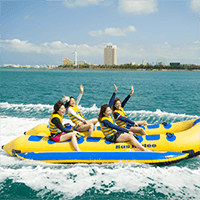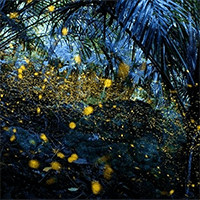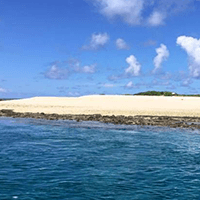Kyoto in Historic sites tour
- Age 1~Age 70
- Over 6 hours on the day
- 08:40 / 09:50
[08:40] ▼Nihonbashi Station Exit 2 (Namba-Shinsaibashi area) [09:50] ▼Kyoto Station Hachijo Exit (in front of 7-Eleven) [10:30] ▼Kinkaku-ji Temple (about 40 minutes) Visiting fees are at the customer's expense. [12:00] ▼Kiyomizu-dera area (individuals visit, stroll freely, lunch on their own / about 3.5 hours) [15:20] ▼Fushimi Inari Taisha Shrine (about 70 minutes) [16:50] ▼After enjoying the day's itinerary, we start to return. [18:10] ▼Shinsaibashi, Dotonbori area (free stroll / about 1 hour) ▼The original name of Kinkaku-ji Temple is Rokuon-ji Temple. It is also called "Kinkaku-ji Temple" because the exterior walls of the Shariden Hall, the central building of the temple, are all decorated with gold leaf. The temple was built in 1397. Originally a villa for Shogun Ashikaga Yoshimitsu (the prototype of Shogun Yoshimitsu in the anime "Kei Ikkyu-san"), it was later converted into the Zen temple "Bosatsurei". If you visit Kinkaku-ji Temple during the autumn foliage season, the golden tower and the red autumn leaves covering the mountain create a spectacular view. (Admission fee: 500 yen for adults, 300 yen for elementary and junior high school students) ▼ Recommended courses around Kiyomizu-dera Temple Recommended course 1: Kiyomizu-dera Temple (admission fee is at your own expense) - Ninenzaka - Ishibekoji - Gion - Hanamikoji - Yasaka Shrine (You can visit several tourist spots according to your preferences and physical condition) Recommended 2: Kimono experience. Interested guests can wear a kimono, stroll through the old streets, visit Kiyomizu-dera Temple, and leave the most beautiful moments. (There are many kimono shops at Kiyomizu-dera and Fushimi Inari Shrine, and you can choose where to return the kimono. We recommend renting at Kiyomizu-dera and returning at Fushimi Inari. You will be responsible for the cost.) ▼ Fushimi Inari Taisha is famous for its thousand torii gates, and many tourists from both Japan and abroad visit it every year. It was ranked number one for three consecutive years as "Japan's most popular tourist spots for foreigners" in a survey conducted by the world's largest travel site. Let's pray for ourselves and our loved ones here. This is a mixed tour, and participants come from all over the world.
- Age 1~Age 70
- Over 6 hours on the day
- 08:40 / 09:50
Tour highlights✓ Enjoy the strange sight of Amanohashidate, one of the "Three Views of Japan," from the observation deck✓ See the boathouses up close on an Ine Bay cruise✓ Receive a lucky charm of wisdom and good fortune at Chion-ji Temple✓ Chance to get a Monjudo-exclusive red seal and omamori charm✓ Includes a Japanese guide (Chinese language support available)Recommended points★ Easy access from Kyoto/Osaka★ Travel is comfortable on a dedicated bus for the entire trip★ Free time to stroll around the sandbar of Amanohashidate★ Take plenty of photos of the fishing village scenery of Ine★ Local seafood lunchOptions~Schedule~[08:40] Exit 2 of Nihonbashi (Namba/Shinsaibashi area)[09:50] Kyoto Station Hachijo Exit, sightseeing bus parking lot in front of the station[11:20]▼Amanohashidate Observatory, one of the Three Views of Japan (approximately 2.5 hours including lunch, own expense)[14:30]▼Ine's boathouses ~ "Venice of Japan" "Kyoto's last hidden place" ~ (about 1 hour, walk or bike, seagull feeding boat, etc., please pay the boarding fee by yourself) [15:30] End the day's tour and head home. [19:00] Shinsaibashi / Dotonbori area (about 1 hour, free time) Amanohashidate is one of the three most scenic spots in Japan, along with Matsushima in Mutsu and Miyajima in Aki. It is a sandbar about 3.6 kilometers long, formed by the deposition of the coast. About 8,000 pine trees of various sizes are planted, and white sand beaches stretch out on both the east and west sides. It is a special natural landscape. It is called "Amanohashidate" because it has a shape like a bridge stretching diagonally towards the sky. There is an observation deck on Mount Monju from which Amanohashidate can be seen. The mountain has a Ferris wheel and recreational facilities suitable for all ages. The view of Amanohashidate from here is called "Flying Dragon View" because it looks like a dragon flying in the sky. From here you can enjoy the vivid scenery of Amanohashidate. (Cable car ticket is at your own expense: Amanohashidate Observatory Cable Car and Monorail Combined Ticket 850 yen) Ine Village was chosen by the Japanese as one of the "18 Most Beautiful Villages in Japan". With its unique Japanese floating boathouse architecture, you can experience the original ecological scenery that cannot be experienced in tourist spots. Even today, people coexist with the sea in front of them. The clear and beautiful sea, the deep green mountains, the ever-changing colors of the sky, and the colors of the boathouses that represent Japan. These are the pure colors of nature that can only be experienced in Ine Town. The fishing village along the coast is away from the hustle and bustle and is full of simple innocence. You can experience a 25-minute cruise around Ine Bay at your own expense and even feed the seagulls. (Boats depart every hour, every 30 minutes. The fare is 1,200 yen for adults and 600 yen for children, at your own expense. A bag of food for the seagulls costs 100 yen. If the boat is cancelled due to wind or waves, you can wander around freely.) Note: There are many eagles living around Ine Funaya, so please be careful when boarding the sightseeing boat. If you see an eagle, stop feeding the seagulls immediately and put away any food you are holding to prevent the eagles from pecking at you.
- Age 1~Age 70
- Over 6 hours on the day
- 07:20
Schedule for the day: [07:20] Meet at Nihonbashi Exit 2 [09:50] ▼Ine Funaya ~ "The Venice of Japan" "The most beautiful village by the sea" ~ |Ine Town |Funaya Hiyori | INE COFFEE (approx. 40 minutes, walk or ride, ride fare at own expense) [11:10] ▼One of Japan's Three Most Scenic Views, "Amanohashidate Observatory" |Chion-ji Temple / Monjudo Hall (a temple for praying for academic success) |Walking and playing in the sea (approx. 2 hours including lunch, expenses at own expense) [14:40] ▼Kyoto Gassho Village ~ Miyama Kayabuki-no-Sato (approx. 40 minutes, free time) |Let's go to the most beautiful photo spot - the little red post box |Miyama Milk and Miyama Ice Cream are must-try in Miyama [15:20] After a fun day's tour, we headed home. [17:20] Shinsaibashi/Dotonbori Area (about 1 hour, free time) ▼ Funaya Days: Funaya Days is a niche tourist spot in Ine that has been featured in lifestyle magazines recently. Locals with high ideals have been working hard to create a tourist exchange facility where anyone can stop by and enjoy the beautiful scenery of Ine. There are facilities such as an information center, restaurant, and cafe. "Hiyori" means sunny and good weather in Japanese. The sight of the seawater sparkling in the sunlight is the most ideal expression of "Funaya Weather". There is also a boathouse that you can visit. ▼ INE COFFEE: is a Japanese modern design with a focus on simple and clean style. The seaside coffee shop is very attractive, with colorful pillows, and sitting here and looking at the sea is a completely relaxing and healing atmosphere. However, the best view here is from the corner on the first floor. The floor-to-ceiling windows overlook Ine Bay. It's a wonderful view. The "INE CAFE" logo is placed on the table, and two heart-shaped sunglasses are placed on the chair. The cafe basically provides a special area for taking photos and checking in, which is amazing. The beautiful view from the floor-to-ceiling windows is like a postcard, and it makes you feel like time has stopped. You should also visit the unique boathouse - the first floor is a cabin, and the second floor is a private home. This unique structure is a "funaya", a feature unique to Ine Town. This tour is a mixed tour, and participants come from all over the world.
- Age 1~Age 70
- Over 6 hours on the day
- 07:30
[07:30-08:30] Pick-up/drop-off/transfer to hotel/private inn Hotels/private inns within the Osaka Loop Line [10:00] ▼Kiyomizu-dera area (individual worship, free stroll, free lunch/approx. 3 hours) [13:30] ▼Fushimi Inari Taisha (individual worship, free stroll/approx. 70 minutes) [15:30] ▼Nara Park (individual worship, free stroll/approx. 1.5 hours) [17:00] ▼After a fun day of sightseeing, start heading back. [18:00] ▼Pick-up/drop-off/transfer to hotel/private inn. Recommended sightseeing courses for hotels and guesthouses within the Osaka Loop Line Course 1: Kiyomizu-dera Temple (Customers are responsible for admission fees.) - Ni, Sannenzaka - Ishibekoji - Gion · Hanamikoji-dori - Yasaka Shrine You can visit your favorite spots according to your physical strength and time ~ Course 2: Kimono experience (Customers who are interested can wear a kimono and enjoy the old townscape and tour Kiyomizu-dera Temple. Let's take pictures of the wonderful moment.) (There are many kimono shops near Kiyomizu-dera Temple and Fushimi Inari Taisha Shrine. We recommend renting a kimono at a shop in Kiyomizu-dera Temple and returning it at a shop in Fushimi Inari Taisha Shrine. Fees are borne by the customer.) Course 3: "Nara Park" where "deer and autumn leaves" are woven together The contrast between the autumn leaves and evergreen trees is vivid Course 4: Todai-ji Temple (Customers are responsible for admission fees.) Todai-ji Temple was built during the Nara period. Nara is popular with tourists and once served as the capital of Japan. It is registered as a UNESCO World Heritage Site as one of the "Historic Monuments of Ancient Nara". Todaiji Temple has eight national treasure buildings, 14 buildings (24 national treasure Buddha statues), and nine other national treasures such as paintings and books. The famous Great Buddha, the Great South Gate, and the Kongorikishi standing statues are all national treasures, as are the Hokke-do Hall, the buildings, and the Buddha statues enshrined within. There are few places in Japan where you can see so many national treasures at once. Admission fees: Todaiji Great Buddha Hall: Adults (junior high school students and above) 600 yen, elementary school students 300 yen; Great Buddha Hall and Todaiji Museum: Adults (junior high school students and above) 1000 yen, elementary school students 400 yenThis is a mixed tour, and participants will come from all over the world.
- Age 1~Age 70
- Over 6 hours on the day
- 08:40 / 09:50
[08:40] Exit 2 of Nihonbashi (towards Namba-Shinsaibashi) [09:50] Kyoto Station Hachijo Exit, sightseeing bus parking lot [10:30] ▼ Sanzenin Temple (approx. 120 minutes, free time, including lunch, please pay your own expenses) [13:30] ▼ Arashiyama (approx. 3 hours, free time) [16:30] We finished our day's tour with a lot of fun and headed home. [17:50] Shinsaibashi/Dotonbori area (approx. 1 hour, free time) Recommended restaurants near Sanzenin Temple: Keibisakan mainly serves soba, tofu dishes, and creative cuisine. Ippukuchaya Main menu: Udon, soba, bowls Ryokawachaya Main menu: Udon, yuba dishes Shinomatsumon mainly serves Kyoto cuisine, tofu dishes, and yuba dishes. Recommended route in Arashiyama (at your own expense. We recommend you choose a tour)1. Sagano train (recommended route: Sagano - Kameoka Station - Sagano)Travel period: March 1st to December 29th (trains do not operate in January and February due to winter maintenance)Closed: Wednesdays (train ticket price is not included, must be purchased separately)Cherry blossom season and autumn leaves season (Arashiyama train, operation date undecided) 1 train 30 seats2. Sagano Bamboo Forest PathSagano Bamboo Forest is located in Arashiyama. The bamboo forest path is about 500 meters long. Pass Nonomiya Shrine and head towards Okawachi Sanso to reach the Arashiyama Bamboo Forest. Walking through the bamboo forest, you can hear the natural sound of the wind blowing through the bamboo leaves. This sound has also been selected as one of the "100 Sounds of Japan that Should Be Preserved". This is also where Ang Lee shot Crouching Tiger, Hidden Dragon. Tenryu-ji Temple on the trail offers a spectacular view of a Japanese garden. The Arashiyama Lantern Festival, held every December, illuminates the bamboo forest and Togetsukyo Bridge with dazzling lights, creating a wintery sight. This is a shared tour, and participants come from all over the world.
- Age 1~Age 70
- Over 6 hours on the day
- 08:40 / 09:50
Tour highlights: ・A stroll through the spectacular scenery at the World Heritage site "Kiyomizu-dera Temple" ・A stroll through the ancient capital dressed in an authentic Kyoto kimono (optional) ・The mysterious "Fushimi Inari Taisha" with its thousand torii gates ・Interacting with cute deer in Nara Park ・Visiting the impressive Great Buddha Hall at Todaiji Temple Convenient day trip plan Morning departure - evening return course Good access with departure and arrival in Osaka/Kyoto Early bird discount available! Take this opportunity to enjoy a one-day trip packed with the charms of the ancient capital. ~Schedule for the day~ [08:40] ▼Nihonbashi Station, Exit 2 (Namba-Shinsaibashi area) [09:50] ▼Kyoto Station, Hachijo Exit (in front of 7-Eleven) [10:00] ▼Kiyomizu-dera area (individual visit, free time to stroll, free time for lunch / approx. 3 hours) [13:30] ▼Fushimi Inari Taisha Shrine (individual visit, free time to stroll / approx. 70 minutes) [15:30] ▼Nara Park (individual visit, free time to stroll / approx. 1.5 hours) [17:00] ▼After a fun day of sightseeing, start heading back. [18:00] ▼Shinsaibashi, Dotonbori area (free time/about 1 hour) Recommended sightseeing course Course 1: Kiyomizu-dera Temple (customer pays admission fee) -Ninen-zaka -Ishibekoji -Gion·Hanamikoji-dori -Yasaka Shrine You can visit your favorite spots according to your physical strength and time~Course 2: Kimono experience (Customers who are interested can wear a kimono and enjoy the old townscape and touring Kiyomizu-dera Temple. Let's take pictures of the wonderful moment.) (There are many kimono shops near Kiyomizu-dera Temple and Fushimi Inari Taisha Shrine. We recommend renting a kimono at a shop in Kiyomizu-dera Temple and returning it at a shop in Fushimi Inari Taisha Shrine. Customers are responsible for the fee.) Course 3: "Nara Park" where "deer and autumn leaves" are woven together The contrast between the autumn leaves and evergreen trees is vivid Course 4: Todai-ji Temple (customer pays admission fee) Todai-ji Temple was built in the Nara period. Nara is popular with tourists and once served as the capital of Japan. It is registered as a UNESCO World Heritage Site as one of the "Historic Monuments of Ancient Nara". Todaiji Temple has eight national treasure buildings, 14 buildings with 24 national treasure Buddhas, and nine other national treasures such as paintings and books. The famous Great Buddha, the Great South Gate, the Kongorikishi standing statues, and the Hokke-do Hall, as well as the Buddha statues enshrined therein, are all national treasures. There are few places in Japan where you can see so many national treasures at once. Admission fees: Todaiji Great Buddha Hall: Adults (junior high school students and above) 600 yen, elementary school students 300 yen; Great Buddha Hall and Todaiji Museum: Adults (junior high school students and above) 1000 yen, elementary school students 400 yen This is a mixed tour, and participants will come from all over the world.
- Age 12~Age 75
- Within 1 hour
Let's explore the history of Shimabara, which is deeper the more we know about it. In fact, Shimabara is a common name, and the original place name is Nishishin-yashiki, and the name Shimabara comes from the Shimabara Rebellion in Kyushu. A walk around the town of Shimabara, the past and present. The history of the red-light district and prostitutes is by no means shallow, and there are customs (traces) that continue to this day. Through the history of Shimabara, you can even get a glimpse of Japanese history. All of the courses you will follow are spots related to Shimabara. This time, we will explore Shimabara, which has never ceased to attract men from all over the world, from a historical perspective! Shimabara Red Light District is a hidden spot in Kyoto that is open even on weekends! The reason it is a hidden spot is that even if you walk around alone with tourists, there are few historical explanations and it is difficult to understand the highlights. If you join my plan, I will explain the highlights of Shimabara, so your understanding will be greatly improved. [Course Contents] ① Remains of Suzaku-oji Right next to Shimabara was Suzaku-oji, the main street of the Heian period. The road is 84 meters wide, so you can imagine how wide it was. ② Remains of the Kaburenjo The Kaburenjo, where the prostitutes practiced, was demolished with the decline of Shimabara, but the sacred tree and photos from that time are on display. ③ Shimabara Daiginkyou Benzaiten Shrine The sacred tree of Shimabara Sumiyoshi Shrine was located within the shrine grounds, but it is now located in a different place due to the influence of the anti-Buddhist movement during the Meiji Restoration. ④ Shimabara Sumiyoshi Shrine It is known as a matchmaking shrine by locals. ⑤ Shimabara Nishimon Monument The red-light district only has one gate, but Shimabara has two. There was originally only one, but there was a reason why Shimabara needed two gates to prosper. ⑥ Remains of Higashi Korokan There was originally a guest house called Higashi Korokan in the Shimabara area of the entertainment district. ⑦ Kadoya Hospitality Culture Museum (exterior only) Kadoya, famous for the Shinsengumi. It is what we would call a high-class restaurant today. ⑧Wagaya This is the only brothel still in operation in Shimabara. ⑨Shimabara Daimon Ryoma Sakamoto and the Shinsengumi actually passed through Shimabara Daimon when they came to Shimabara. This is a place where you can feel the history deeply. If you would like to participate on a day other than the event or if you would like to apply as a group, please contact us. [Price includes] Guide fee
最近チェックしたプラン
Please wait a moment
![[Day trip] Kyoto city hotel pick-up and drop-off included. Japanese-style Kyoto sightseeing tour, Kinkaku-ji Temple - Kiyomizu-dera Temple - Fushimi Inari Taisha Shrine. Passing through the 1,000 torii gates.の画像](https://img.activityjapan.com/10/55487/10000005548701_P3BiVCAd_3.jpg?version=1733822342)
![[Day Trip] Amanohashidate, Chionji Temple, Monjudo, and Ine Funaya Day Trip (Departing from Kyoto/Osaka)の画像](https://img.activityjapan.com/10/55399/10000005539901_P3BiVCAd_3.jpg?version=1729051142)
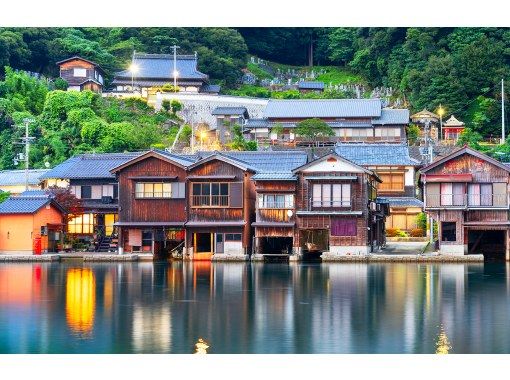
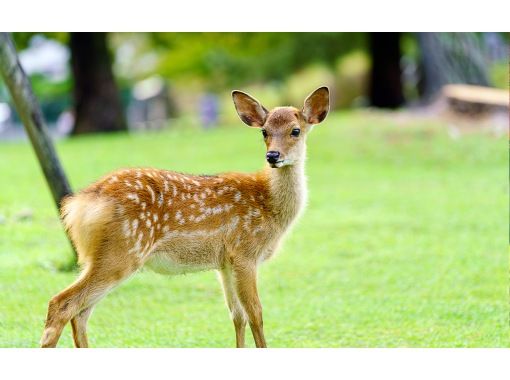
![[Kyoto day trip with transfer included] A plan to visit two of Kyoto's great attractions: Arashiyama's spectacular trolley ride and Kokedera Sanzenin Templeの画像](https://img.activityjapan.com/10/55488/10000005548801_P3BiVCAd_3.jpg?version=1744016286)
![[SALE] Kyoto and Nara One-Day Tour (Kiyomizu-dera Temple, Kimono Experience, Fushimi Inari Taisha Shrine, Nara Park) (Departing from Osaka/Kyoto)の画像](https://img.activityjapan.com/10/55460/10000005546001_P3BiVCAd_3.jpg?version=1730786226)
![[School trip for adults] To Shimabara, a red-light district known as one of the three major red-light districts in Japanの画像](https://img.activityjapan.com/10/58924/10000005892401_te5j6wgB_3.jpg?version=1745508125)
